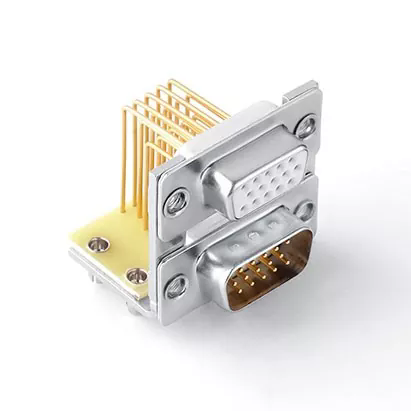Why Are D-Sub Connectors Still Relevant in Modern Technology?
2024-12-02
In an era dominated by USB, HDMI, and other sleek connectors, you might wonder: do D-Sub connectors still have a place in today’s technology landscape? Surprisingly, the answer is a resounding yes. These classic connectors, first introduced in the 1950s, remain indispensable across various industries. Here’s why they continue to thrive in a world of ever-evolving connectivity.
1. What Are D-Sub Connectors?
D-Sub connectors, short for D-subminiature connectors, are a family of electrical connectors named for their distinct D-shaped metal shield. Available in a variety of configurations, they commonly include pin counts ranging from 9 to 50, offering options for diverse applications.
2. Exceptional Versatility
One of the primary reasons D-Sub connectors remain relevant is their unmatched versatility. They are used across industries such as:
- Computing: For serial and parallel ports, particularly in legacy systems.
- Industrial Automation: Connecting machinery and control systems.
- Aerospace and Defense: Reliable in mission-critical environments.
- Audio/Visual Systems: For analog video signals in older equipment.
Their ability to handle both data and power transmission makes them a go-to solution for a wide range of use cases.
3. Robust and Reliable Design
D-Sub connectors are built to last. Their sturdy construction ensures reliable performance even in harsh conditions. Key features include:
- Durable Metal Shielding: Provides excellent protection against electromagnetic interference (EMI).
- Firm Connections: Screws or clips secure the connector, preventing accidental disconnection.
- High-Temperature Tolerance: Suitable for demanding environments like industrial settings.
4. Customization and Adaptability
Another reason for their staying power is their customizable nature. D-Sub connectors come in a variety of configurations, including mixed-contact options for combining signal and power transmission. This adaptability allows them to cater to both standard and specialized applications.
5. Backward Compatibility
With so many legacy systems still in operation, the backward compatibility offered by D-Sub connectors is invaluable. Many industries, especially aerospace and manufacturing, rely on older equipment that integrates seamlessly with D-Sub interfaces.
6. Cost-Effectiveness
D-Sub connectors are not only reliable but also affordable, making them an economical choice for both new designs and repairs. Their widespread availability ensures that replacements or upgrades can be implemented without significant expense.
7. Challenges and Future Prospects
While D-Sub connectors face competition from smaller, faster, and more specialized alternatives, they remain indispensable in applications where durability, versatility, and compatibility are paramount. Advances in materials and design ensure that these connectors can meet modern demands while retaining their core benefits.
Conclusion
D-Sub connectors are a testament to the enduring value of a well-designed product. Despite the rise of newer connectivity standards, their versatility, robustness, and cost-effectiveness keep them relevant in a variety of industries.



